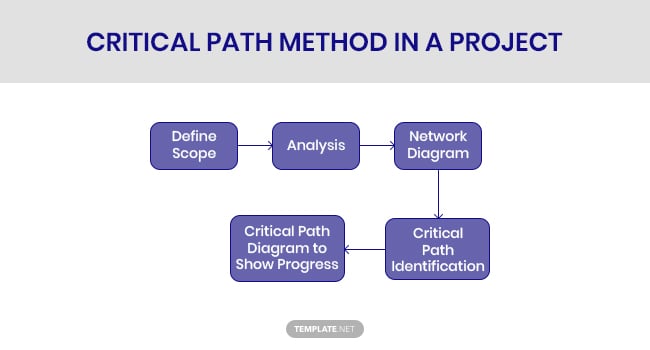A Quick Guide to Critical Path Method (CPM) in Construction Business
Most people know that starting a construction business is not an easy feat. With many things to consider, the company takes up a lot of time planning the procedures and schedules of projects, programs, and investments.

A Quick Guide to Critical Path Method (CPM) in Construction Business
The success of a construction company is more than business plans, it involves efficient leaders, crafty marketing campaigns, and importantly, smart methods of construction planning and scheduling. And so, a critical path method or CPM comes in to be the guide for organizing the timeframe of the construction company’s projects. This article thoroughly discusses the meaning, purpose, and advantages of using CPM in a project plan. Continue reading and use this new information for your construction business.
Define CPM
The critical path method, commonly known by the acronym CPM, is a well-known scheduling technique that construction companies use to determine the arrangement of the project activities. Project managers are quite familiar with the processes of CPM, as it was a requirement for their Project Management Professional (PMP) certification.
However, for those unaware of the term, it merely is the most efficient construction schedule for activities that maximizes time and material usage. Project management aligns the goals of the construction company with the procedures of the project to make sure that all people involved receive benefits. CPM is an effective technique that considers the feasibility of the plans in a project and utilizes enough resources to meet the assigned goals.
History
Developed during the time when society was still recovering from the events of the past decades, the Critical Path Method (CPM), also called Critical Path Analysis, was a groundbreaking achievement for the community. The process applied to any project—aerospace planning, housing development analysis, and research projects—that has interdependent activities.
Although formulated in the 1950s, CPM was first used in 1966 for the project analysis of the former World Trade Center Twin Towers located in New York City. Moreover, the original CPM algorithm created by Morgan R. Walker and James E. Kelley Jr. is not available to the public anymore. There is a new approach that caters to the need of the modern times, ergo innovative software applications.
Critical Path Method in a Construction Project

Construction companies can’t easily create an efficient CPM without the right components. With that, the project managers have to look at the budget limit and management plans of the enterprise. The input from these documents will help in providing data for the limits and restrictions of the project. After the calculations of the numbers, project managers can have an overview of the activities and then determine the most productive way of doing the set of plans. From these projected setups, the daily construction schedule will be complete. Here are the steps that contractors, project managers, and planners take to develop a productive CPM.
Define Scope
Like any other project, construction projects have a scope. Whether it’s about the duration of the project or budget limitations, the creators of the plan need to know. Having a well-defined scope helps in formulating a project plan that fits the need of the owner while recognizing the capabilities of the builder. So the range includes the time (months and seasons), people (workers, inspectors, maintenance), location, weather conditions, and building materials.
Analysis
With the data from the project scope, the team can start analyzing the best options to take to maximize the use of the allocated resources for the project. For instance, if the project has four phases or parts, the team has to know the timeframe and dependency of each stage. After knowing the details, the project manager and the team have a better understanding of what part to start or simultaneously construct together. There has to be a thorough management swot analysis before construction begins.
Network Diagram
To have a better overview of the work, the contractors and project managers need to show the project network diagram. Furthermore, a visual representation will significantly help the designers and contractors when formulating the plans. Since CPM is a scheduling method, it incorporates drawings and blueprints. The stages in the projects will have particular notes, including the preferred months of completion and preconditions. Then, using the data, the contractors will make plans of action. Sometimes, there are many plans. However, it is the responsibility of the project manager to choose the plan that’s convenient for everyone.
Critical Path Identification
When the contractors recognized and summarized the project activities, they can start with critical path identification. The critical path is part of the work sequence, and it plays an important in the movement of the work. As an example, the completion of Phase A affects the start of Phase B. Without completing Phase A, the team can’t continue to Phase B. Therefore, Phase A is a priority for the project, especially if it’s relevant to the project. The contractors have to understand the purpose of the activities before tagging them as a priority or not. Identifying activities is essential in saving time, energy, and resources.
Critical Path Diagram to Show Progress
After figuring out the activities, contractors and project managers print the figures to show progress. Besides, the fixed schedule for the plans, having a path diagram will inform the people in the business where they are and what development is complete. Moreover, managers can write down deadlines to tell everyone about the importance of doing work efficiently.
Advantages and Disadvantages of CPM
Like any other method in the business, CPM comes with pros and cons. Here are some advantages and disadvantages when contractors choose this technique for construction projects.
Advantages
- Observing the dependent activities is better when it has a diagram. The project manager and workers have an idea where the project is going.
- The project manager can optimize the efficiency of workers in the construction site. By knowing more reliable methods and cost analysis, productivity can rise.
- Contractors can understand complex projects properly when they use CPM. With equipment analysis, planning, and swot analysis, the engineers can come up with better plans.
- Project managers can calculate the duration of activities and reduce timeline costs if necessary. They can see whether an operation, even if it starts late, has no effect on the whole project.
- After seeing where risks are higher, the team can make assessments for risk management plans.
Disadvantages
- Large projects have many activities and dependent schedules. The numbers can make the plan too tricky for planners and designers to create when using CPM.
- Designing the plan is time-consuming if the project is enormous. Drawing up plans is more difficult when the project is too large.
- If the owner decides to change the time and material contract, the sudden development is not friendly to the method. CPM cannot make immediate adjustments to the requirements of the investors or owners.
- CPM does not recognize the inflow of resources in the project. Moreover, it does not include the availability of the stocks in the construction site. This method has no control over the schedule of the workers and officers.
How Resource Limitations Affect the CPM
As mentioned in the previous section, CPM does not include the allocation and input of resources in the construction site. So, what happens when materials schedule deliveries get interrupted by unpleasant weather? It results in delays in the construction of the project and then missed checkpoints. Resource constraints, a common problem in the construction site, is a problem that CPM does not recognize.
To avoid conflicts, the planners and project managers need to include contingency plans in the project’s annual schedule. By observing other factors that might affect the project, the heads can reschedule the resource deliveries—sometimes, doing it ahead of the prearranged date. Construction companies should remember that CPM is not flexible. With that, they have to find other methods of averting delays and interruptions.
Conclusion
In growing your construction business, you have to consider many little things. The people you should hire, the investments you need to do, the construction marketing plans you have to approve—all these are relevant to the growth of your construction company. But besides these things, you also have to employ various methods to improve the procedures in construction projects. And that’s when you have to try using techniques that enhance the proceedings and make sure that you can receive better rewards in the future. In conclusion, numerous practices exist that have positive effects on the construction business. It’s a matter of knowing which one works best with the enterprise.






